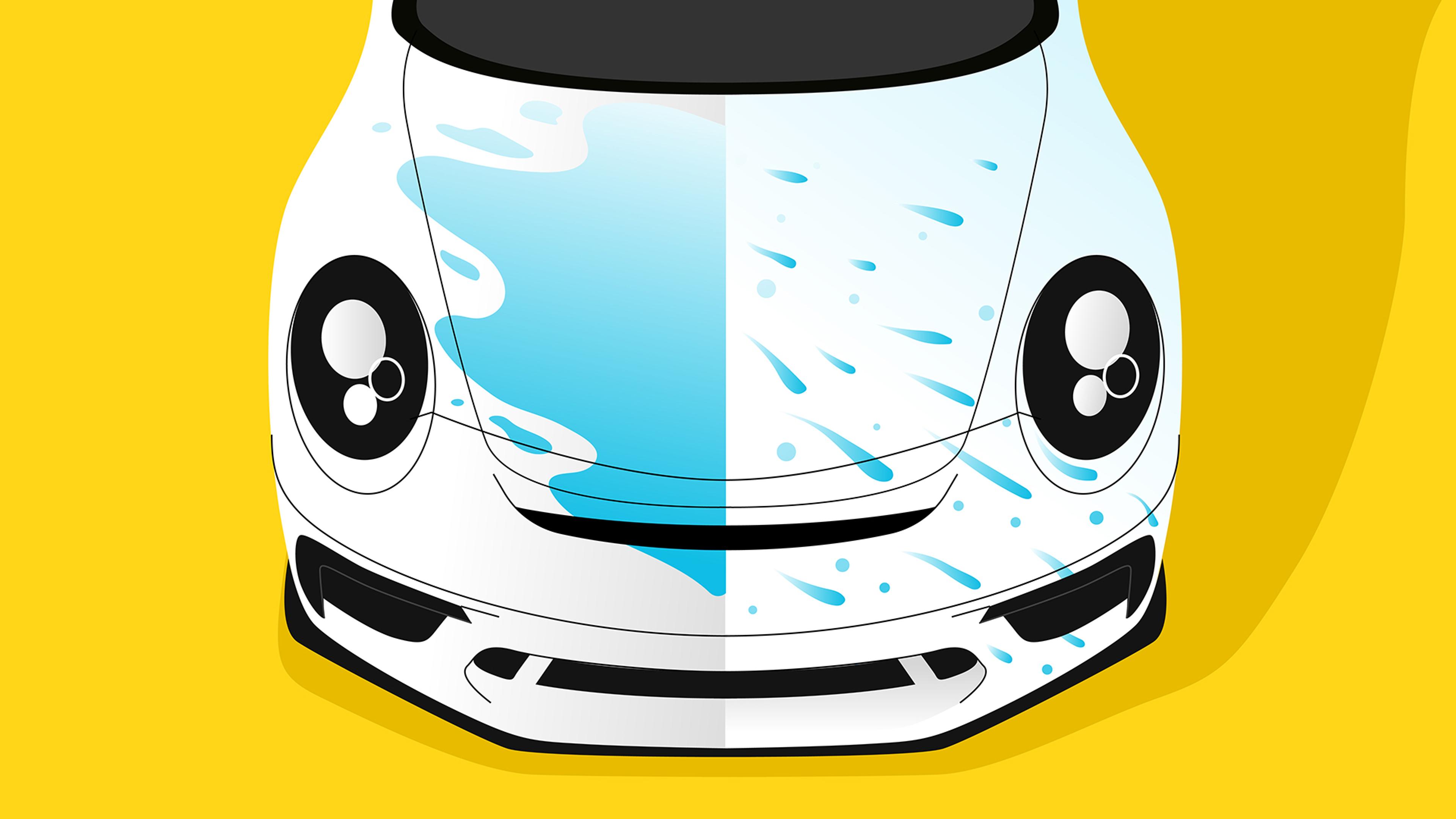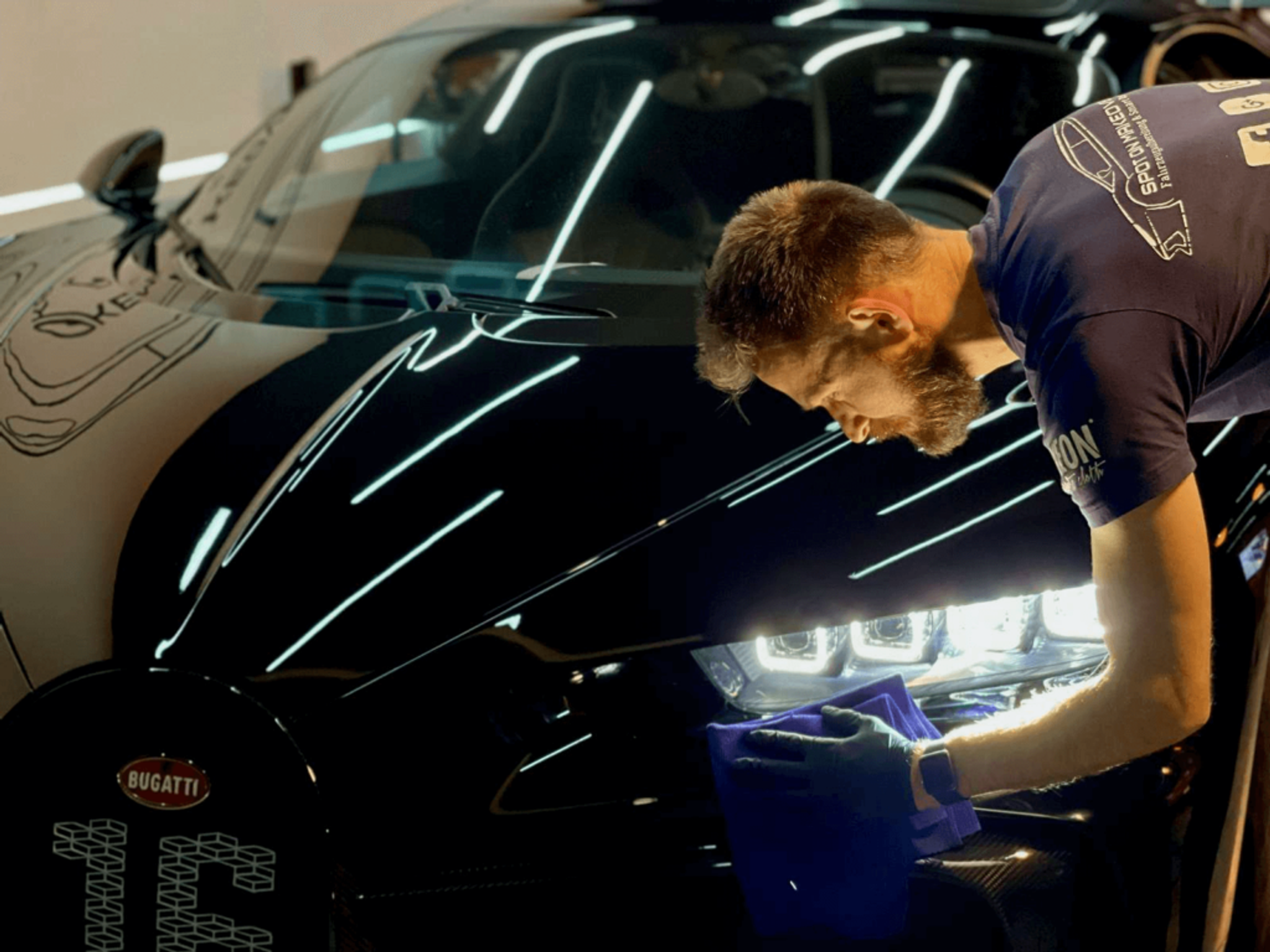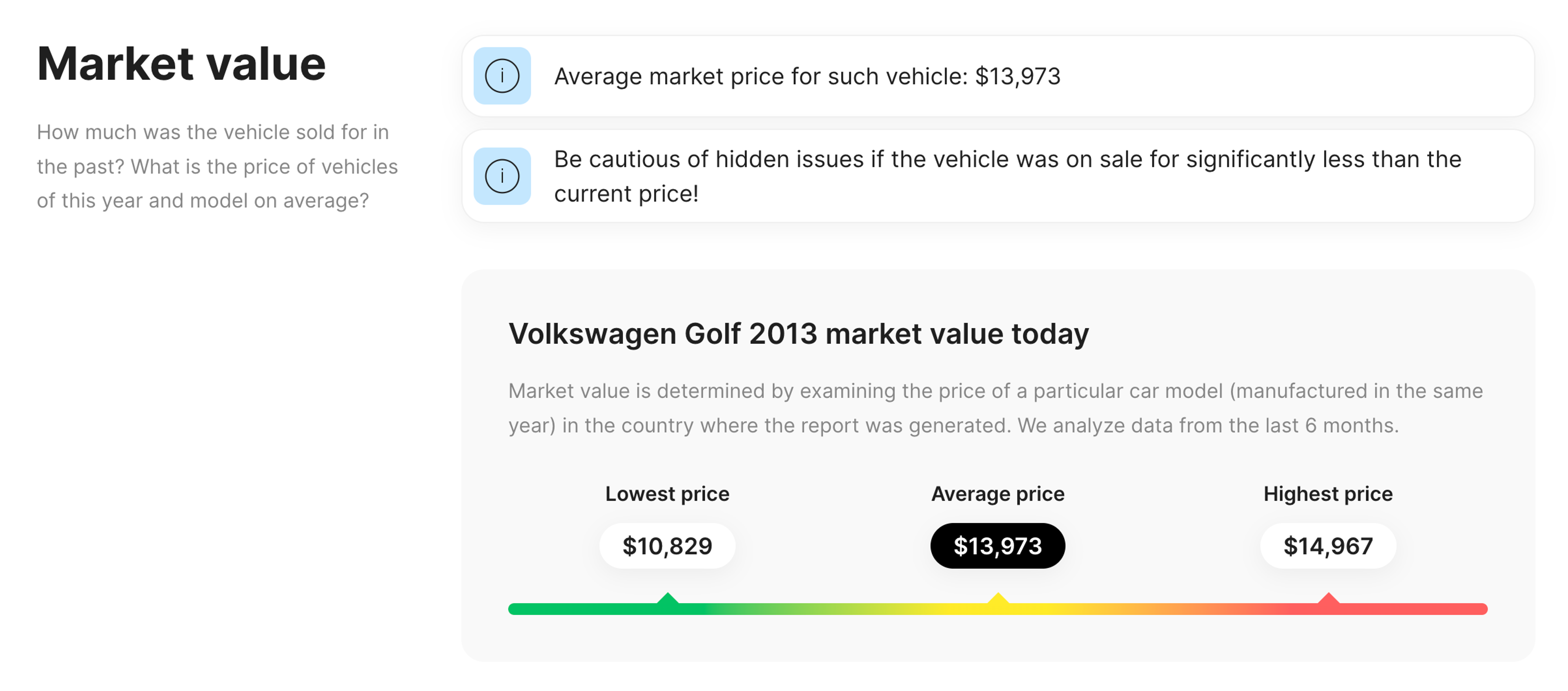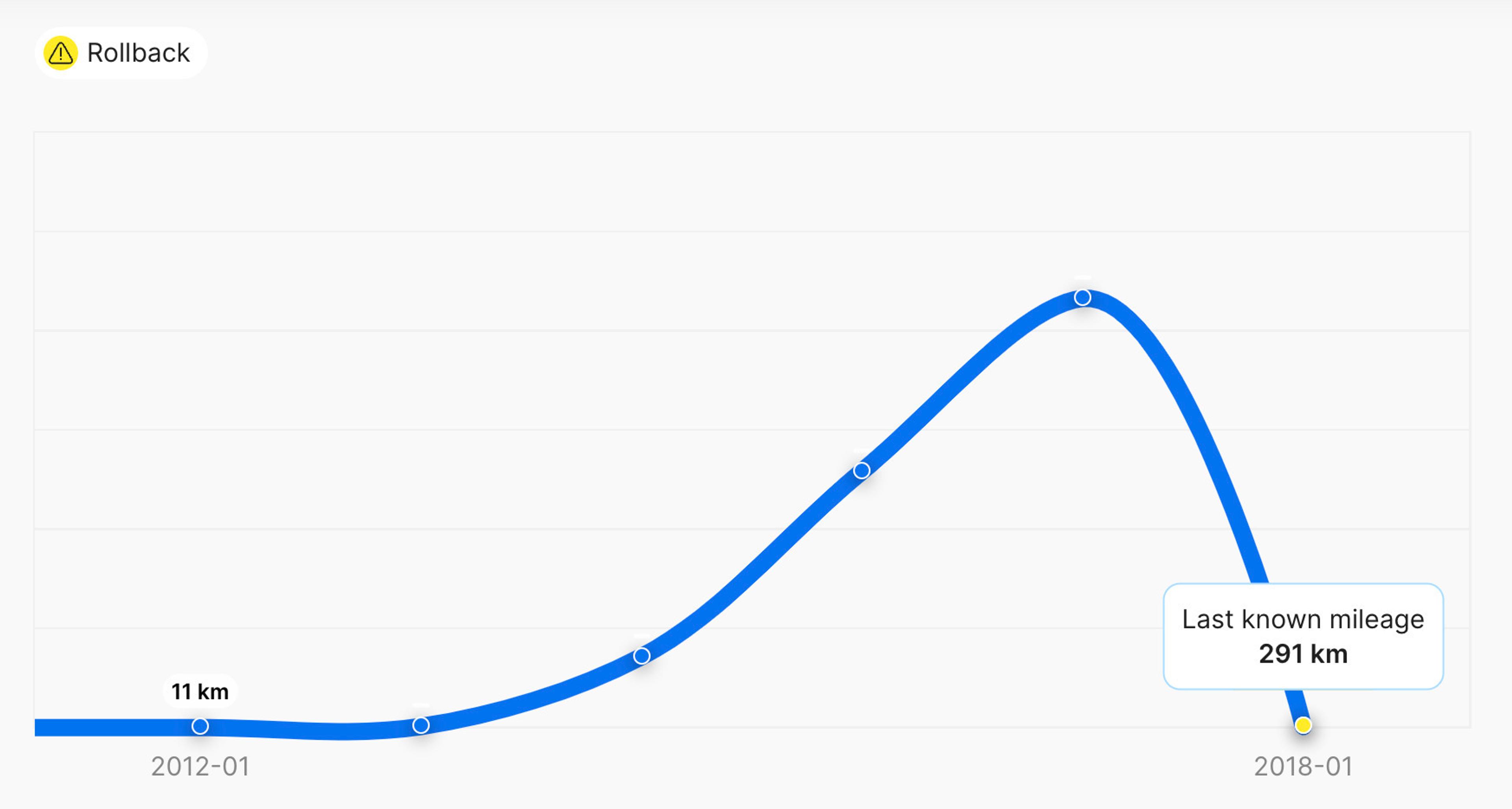01/19/2023
What is ceramic coating?

A famous saying goes that everyone has only one chance to make the first impression. Somewhat accidentally, this saying fits perfectly for used vehicles.
When you drive to see a vehicle, you first notice dents or spots of rust on the bodywork, making you question a vehicle's condition. However, every car owner can prevent these bodywork impairments with the help of ceramic coating.

Looks can be deceiving!
Don't risk your safety - check it with carVertical first
Definition of ceramic coating on a car's paint
Four meticulously arranged coatings that make up the average vehicle body help shield it from corrosion and environmental factors. However, even the thickest group of layers occasionally fall short in their ability to protect the bodywork from harm.
Ceramic coating is a chemical polymer solution that coats a car's exterior to guard against external paint damage. It's often applied by hand and mixed in with paint on your automobile, adding an extra layer of hydrophobic defense.
Types of ceramic coatings

Extra protection for an automobile’s body is available by using ceramic coating kits, accessible to both specialists and novices. However, there are a few differences between them.
Professional-grade ceramic coating
There's a very good reason why professional-grade car coatings give a much better end result.
Only skilled installers working in a controlled atmosphere, using precision and cutting-edge procedures, can apply ceramic coating to produce an incredibly smooth and flat surface.
Consumer-grade ceramic coating
Unfortunately, the consumer-grade protective coating of a vehicle's paint is less effective than a professional one. Nevertheless, companies offer two types of ceramic coatings for a cost-effective price, which extend the lifetime of your car's bodywork.
Spray coating
It’s applied similarly to spray-on wax. All you have to do is spray it on a clean surface, wipe it off with a microfiber towel, and voilà! You have ceramic coating that may last a few months.
The titanium dioxide content of several of these spray-on coatings is greater than the silicon dioxide content (SiO2). According to a general rule for ceramic coatings, when the percentage of TiO2 is high, the coating is tougher and more resilient, increasing protection. The layer becomes slippery or hydrophobic when the SiO2 content is increased. Due to this, water sheets off the surface.
Nano coating DIY consumer kits
Nano-coating kits should be your first choice if you prefer high-quality ceramic coating.
The liquid polymers that create nanoshield paint protection also contain nano-dispersed metal oxide particles. The polymer combination restores the depth and saturation of a color in painted surfaces by filling micro-cracks and scratches and visually smoothing them out after polishing.
Advantages of ceramic coating

The main advantage of ceramic paint coatings for cars is a transparent layer of protection from a wide range of damage inflictors, such as acid rain, tree sap, or even bird droppings. However, ceramic paint coating also provides the following advantages.
Resistance to stains and scratches
One of the main reasons why vehicle owners tend to consider ceramic coating for cars is to protect paint.
With ceramic coating, you can avoid unnecessary hassles caused by road debris or malicious road users who may scratch your doors or bodywork.
Deep glossy color
All colors are enhanced by ceramic coating that blanket your vehicle in a glossy layer of ceramic protection. With a bright reflective surface, black will appear darker, red will pop with more vibrancy, and white and silver will look like they are dipped in glass.
Easier cleaning and maintenance
While ceramic coating makes car cleaning easier, if you want it to last, you should always avoid automatic car washes since they will destroy the coating quickly.
Professional detailers advise that ceramic-coated cars should have maintenance performed every 1 to 2 weeks utilizing the 2-buckets approach when you wash your car with special tools and your hands. Use a touchless car wash at least once every week if you don't have time for that.
UV protection and heat resistance
It’s common for vehicle owners to protect their vehicle's paint from rock chips or road salt. UV rays, however, can cause just as much damage.
A vehicle's paint will eventually fade and become less reflective after being permanently exposed to direct sunlight. However, ceramic coatings provide UV protection and thermal resistance up to 1,600 °F (871°C) degrees.
With a DIY ceramic coating kit, you can apply it yourself
It may look that applying ceramic coating yourself could be a faster and cheaper option. However, vehicle owners need to know that this process typically takes 2 to 3 days and requires significant preparation. Furthermore, most ceramic coatings need to be applied indoors.
You should also ensure that you have a proper protective equipment for your skin and eyes. It can be very tricky to remove if it gets on your hands, arms, legs, or other parts. It can also cause light burns if your skin is sensitive to chemical exposure.

How long does ceramic coating last?
Your ceramic coating will last between 2 and 5 years if you maintain it well. Many specialized ceramic coatings could have lifetime warranties.
Several factors have an impact on the lifespan of ceramic coating:
1.The actual coating itself.
2.How the coating was applied.
3.Care and maintenance of a vehicle after coating installation.
Removal of ceramic coating
Ceramic coatings frequently have high resistance to a variety of chemicals and cannot be cleaned with water. However, ceramic coating that is old or of poor quality will be more susceptible to degradation.
Since ceramic coating is a physical layer, the only way to totally remove it and show the clear underlying coat is polishing your car.
Bring your car to an auto detailing shop where professionals will gently remove ceramic coating without harming the bodywork.
Alternative ways to keep your car paint protected
Ceramic coating isn’t the only option for a long-lasting protection. Here are a couple of alternatives.
Paint protection film
If protecting a car's surface is your top priority, the paint protection film is the most effective way to do that. It's so good it will cause you to reevaluate whether paint protection or ceramic coating is the better choice.
The paint protection film protects a vehicle's body from any abuse during the day-to-day, track-day driving or even off-road grime. Furthermore, high-quality paint protection films have self-healing properties and prevent paint swirl formation.
Disadvantages of the paint protection film
The cost of the paint protection film is often cited as the major drawback. However, paint protection film wrapping allows you to choose which parts of a vehicle you want to protect. If you have a tight budget, paint protection film can be put on the most vulnerable bodywork parts. With ceramic coating, you don’t have that option.
Finding a workshop where paint protection film can be skillfully applied is the biggest challenge since it will ensure you won't have to worry about bubbles, dust, or dirt under the freshly finished wrapping.
Cost of ceramic coating in comparison to paint protection film
Applying ceramic coating could cost $600 to $3,000, depending on a vehicle’s size and a detailing shop.
As for paint protection film, if you want to protect your entire car, expect to pay between $1,500 and $6,000.
Considering how much does paint protection film cost, ceramic coating is a cheaper option.
Graphene coating
Like ceramic coating, graphene coatings offer mainly the same protection properties. However, they also bond chemically to your vehicle's paint through solvent-based carrier fluids, forming a semi-permanent barrier – it offers longer durability and enhanced hydrophobic properties.
Are there any drawbacks? Of course. Ceramic coating is cheaper, which is important if you’re planning to take a vehicle to a detailing studio.
Prevent car body damage and retain its value
With such protection measures as ceramic coating in place, preserving your car's bodywork, even after several years of rough operation, has become more manageable. In an era when vehicle parts have become increasingly expensive, every form of protection not only safeguards a car but also its value.

At the same time, safeguarding your car's value extends beyond exterior protection because a vehicle's worth is influenced by other factors too, such as its mechanical condition, mileage, or ownership history. These elements collectively determine your vehicle's market value and desirability. However, staying informed about these aspects can be challenging, and this is precisely where a carVertical vehicle history report proves to be highly useful.

For instance, if you've diligently maintained your car, the report can reflect your commitment to its upkeep, making it easier to sell it for a higher price. On the other hand, if you're a buyer, the report can help you make informed decisions by revealing any red flags, such as accidents, clocked mileage, or title issues, that could affect the car's value and overall condition.

Check your VIN
Avoid costly problems by checking a vehicle's history. Get a report instantly!
